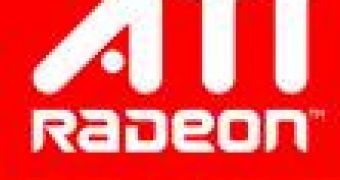Although the ATI Radeon 4800 graphics card was expected this month, its launch has been delayed for week 25, as the company announced. The major problem caused by the delay is that Radeon 4800 will come after Nvidia's new high-end chip GT200. Everybody has been expecting ATI to bring its RV770 chip before Nvidia's card. It seems that ATI lost the pole position, but the race should remain tight on the performance part, albeit the cards cannot be compared when it comes to price.
Since the launch day approaches, some info on the Radeon 4800 series won't hurt anybody, so here it is. Three cards will be part of ATI's new graphics cards series, namely 4850, 4870 and 4870 X2. A "4850 256MB" version will also be offered to users, but this SKU "option" is mainly intended as a support with cheap parts for the OEM/ODM/SI range.
The first card from the series, Radeon 4850, is the company's launch board. The card is also known by the name of "Makedon", perhaps coming from Terry "Catalyst" Makedon, group manager for software and video in the AMD (ATI) graphics division. 512 MB of GDDR3 memory will be available on Radeon 4850, along with a single-slot cooling solution. These specifications seem to be final, as some vendors, according to TgDaily, will begin printing the boxes next week. 4850 will support CrossFireX for up to four cards on any appropriate motherboard (AMD's 790FX and 790GX, or Intel Skulltrail and X48) with a 6-pin PCIe power connector for each card.
July will bring to us two more cards from the series, Radeon 4870, featuring 512 MB GDDR5, and Radeon 4870 X2 (R700), featuring 1024 MB GDDR5. The Radeon 4870 chip, also known as "Trojan", features a dual-slot cooler as the earlier XX70 boards. The 512 MB GDDR5 graphics card is supposed to outcome Nvidia's expected cards, at least in the bandwidth field. ATI will also approve the 1024 MB GDDR5 card if its partners want to build it, yet this will probably happen sometime during fall, for the first card to ship properly.
There are some who claim that 4870 offers as much or even more performance than a dual-chip 3870 X2, which experienced bad synchronization with the interface, although it supported large amounts of data. Nobody expects ATI to make that mistake again with the 4870 X2, although there is no info yet on the type of connection two RV770 GPUs will use.
All the features brought in by Radeon 3800 series will be available on the new cards as well, including DirectX 10.1, PCI Express 2.0, or dynamic geometry acceleration. An interesting feature should be the "Game physics processing capability", stressed out by the manufacturer. The way in which ATI managed to expand the GPU capabilities remains a small mystery. But there will be a 7.1 channel-via-HDMI support available on the Radeon 4800 graphics cards, along with some color output enhancements. The cards will deliver a nice surprise if they come with HDMI 1.3 support, just as if they brought a second generation for the Unified Video Decoder ("UVD2").
Power consumption has been put under the microscope as well. The GPU is monitored by PowerPlay in every aspect, but won't need an 8+6-pin combination except for the dual-GPU 4870 X2. A single card will require a 450 watt power supply, while two cards go for the 550 watt version.
When it comes to pricing, AMD keeps all things on a side Nvidia won't reach too soon. Even though price tags have not been set as final, rumors say that Radeon 4850 will cost about $189 - $219 at launch, following 3850 512MB model, while 4870 GDDR5 goes for the $249 - $279 range, perhaps even less at launch.
These prices could hit the market on a weak point, making the Radeon cards win the back-to-school market, yet some believe ATI is still behind. The idea is that there might not be enough time to manufacture and ship thousands of machines to North America, since Europe should not be a problem as the school starts in September/October.
While waiting for ATI's cards, all eyes will probably be on Nvidia, to see whether or not it is capable of developing a powerful competitor for the sub-$300 range, now that the 55nm G92 is on its way to the market. AMD/ATI sure hopes to regain that market share. Moreover, it plans to revolutionize the graphics cards industry by the end of the year.

 14 DAY TRIAL //
14 DAY TRIAL //